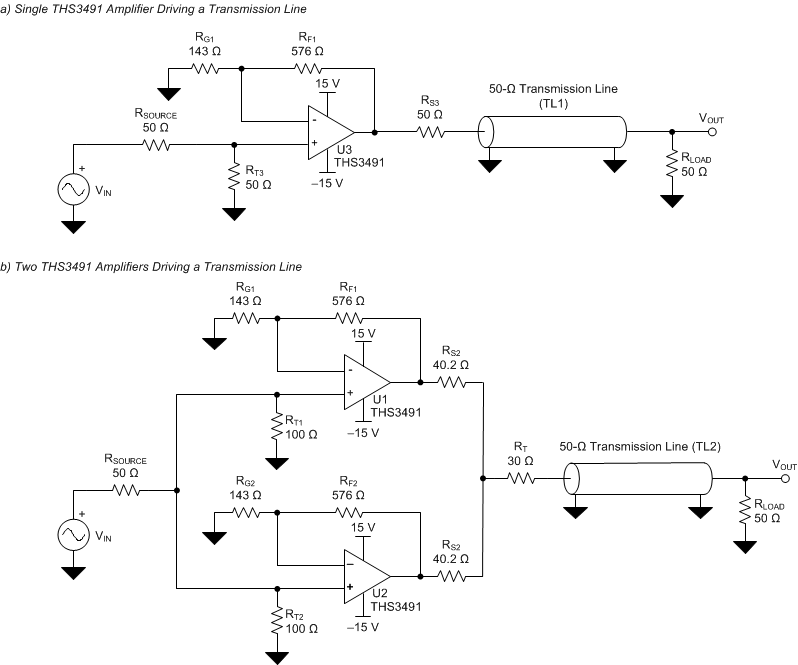ZHCSHX6C August 2017 – February 2023 THS3491
PRODUCTION DATA
- 1 特性
- 2 应用
- 3 说明
- 4 Revision History
- 5 Device Comparison Table
- 6 Pin Configuration and Functions
- 7 Bare Die Information
- 8 Specifications
- 9 Detailed Description
- 10Application and Implementation
- 11Device and Documentation Support
- 12Mechanical, Packaging, and Orderable Information
封装选项
机械数据 (封装 | 引脚)
散热焊盘机械数据 (封装 | 引脚)
订购信息
10.2 Typical Application
The fundamental concept of load sharing is to drive a load using two or more of the same operational amplifier. Each amplifier is driven by the same source. Figure 10-5 shows two THS3491 amplifiers sharing the same load. This concept effectively reduces the current load of each amplifier by 1/N, where N is the number of amplifiers.
 Figure 10-5 Load-Sharing Driver Application
Figure 10-5 Load-Sharing Driver Application